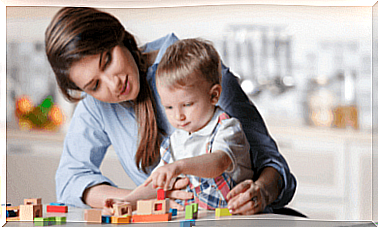My Child Is Afraid Of Animals, What Should I Do?

Not all children react the same way when they see a dog or other pet. Some like to pet them and are very attracted to these animals. Others prefer to stay away from animals and thereby show that they are afraid of animals. There is no specific reason why this is happening.
Sometimes it can be due to a previous bad experience or they have been taught that an animal they don’t know can be dangerous. There are also children who simply feel intimidated by the strange shape of the animal.
“You have the more active and adventurous children, while others are calmer and less open to new experiences. The latter feel more stressed when faced with the new and unknown,” says Dr. Tracy Dennis of Hunter College’s Psychology Department.
While fear is a defense mechanism that keeps children safe, it is best to teach them to show respect and caution rather than fear of animals that prevents them from experiencing the enriching experience of discovering these animals.
How to help children who are afraid of animals
Here are some tips that can help parents move their children between fear and respect.
Try to understand the fear

Fear is irrational. Therefore, it does not help to force children not to be afraid of animals. It is better to try to understand what is causing the fear and find a strategy to help them deal with it.
For example, if your child is afraid of a dog because of his size, don’t advise him to approach a large dog. If you are with a small and calm dog, approach him first and then encourage your child to follow you with your protection.
Teach your child how to approach the animal if he is afraid of animals
Children may approach the animal uncomfortably or with excessive emotion and thus frighten it. This usually causes a violent reaction that frightens the child even more.
It is best to guide them every step of the way and choose the words you use carefully. It’s best to avoid words that warn them, such as “be careful so he doesn’t bite you” or “don’t get too close as it could be dangerous.” Instead, use positive reinforcement such as “approach the animal calmly” or “be kind to the animal.”
First of all, teach your child that he or she must always ask permission from the owner before approaching an animal. Next, it is better to let the animal smell your child’s hands before he or she tries to pet it. Both dogs and cats feel more comfortable after inspecting the scent of someone they don’t know yet.
Try to distract the animal by stroking its head. Then invite your child to touch it from one side, preferably not by the tail, to avoid startling the animal. However, the head of the animal can be somewhat intimidating for the child.
Avoid puppies

Young animals are more unpredictable than adults. Biting, scratching or jumping over people can be play for them. What can mean a gesture of trust, joy and love to an animal, can seem a hostile gesture to a child.
Learn the language of animals
Pets have a unique way of communicating with people. Learning their language and then teaching it to your children can be very helpful in facilitating a confrontation.
For example, Linda Case, author of the book Canine and Feline Behavior and Training: A Complete Guide to Understanding Our Two Best Friends, states that “an open mouth with the lips back, the tongue out, and a relaxed face invites interaction.”
Teach your child how to deal with animals

Like puppies, children are unpredictable. The fear can turn to excitement once the first encounter with the animal is successful. With that emotion, their actions may frighten or harass the animal. Explain to your child that they should not push the animal, grab the fur, or hold it by the tail.
Do not bring a pet home if your child is afraid of animals
Many parents think it’s a good idea to bring a pet home. Your child and pet may get used to each other over time, but it will take many days of undue stress.
Wait until your child is ready. Some people keep the pet in a room until the child starts to trust it, but this is also not recommended. Pets can become aggressive if you do this because they may think it’s not their role to socialize.









